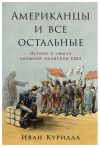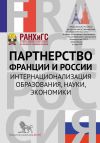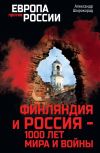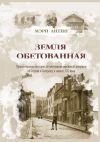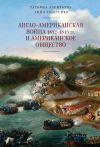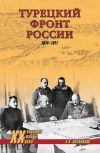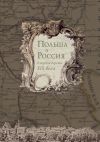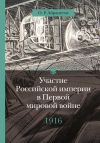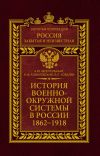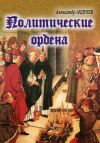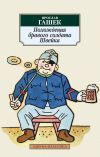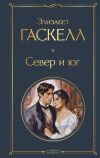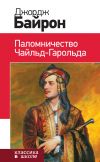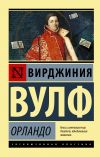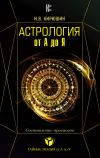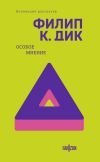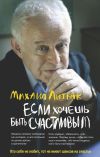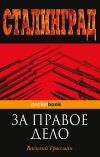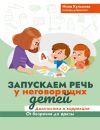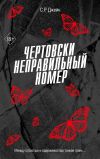
Автор книги: Сборник статей
Жанр: История, Наука и Образование
сообщить о неприемлемом содержимом
Текущая страница: 9 (всего у книги 33 страниц) [доступный отрывок для чтения: 11 страниц]
История России: взгляд из Америки
Gerald Surh. Recent Studies of Antisemitism and anti-Jewish Violence in Eastern Europe, 1881–1914
Jonathan Dekel-Chen, et al., eds., Anti-Jewish Violence. Rethinking the Pogrom in East European History (2011).
Faith Hillis, Children of Rus’. Right Bank Ukraine and the Invention of the Russian Nation (2013).
John D. Klier, Russians, Jews, & the Pogroms of 1881–1882 (2011).
Natan Meir, Kiev: Jewish Metropolis. A History 1859–1914 (2009).
R. Nemes & D. Unowsky, Sites of European Antisemitism in the Age of Mass politics, 1880–1918 (2014).
Yohanan Petrovsky-Shtern, The Golden Age Shtetl. A New History of Jewish Life in East Europe (2014).
This review article focuses on two themes in the period before 1914, anti-Jewish violence and antisemitism. The two themes and their mutual reinforcement reached their high point in the 1881–1914 period, influencing not only the most rapid and consequential transformation of the Jewish population but also the unravelling of the Russian Empire in the same period.
Anti-Jewish violence, most dramatically represented by the pogroms concentrated in 1881–2 and 1903–6, was for Russian Jews the most distinctive, dreaded, and priority-setting events of the period. Russian Jews seem almost always to have lived in liminal fear of discrimination and attack, never more so than in the period after 1881. Violence against Jews, its anticipation and aftermath are encountered in all forms of Russian and Jewish writing, fiction and non-fiction, personal and historical, journalistic and epistolary. Pogroms, their foreboding, and their memory gripped and transformed the lives of Russian Jews in late imperial Russia as no other force did or could do.
The violence mounting in that period has been associated and even identified with the intense and widespread antisemitism prevailing in Imperial Russia, among plebeians and patricians alike. The close relationship between antisemitism and anti-Jewish violence has been so obvious that it has become a historiographic code that has often short-circuited broader inquiry. While pogroms can be and have been seen as themselves instances of antisemitism, their close identification has obscured the fact that there were many persons – perhaps the majority – holding antisemitic views but opposed violence against Jews. On the other hand, many of the participants in the violence were not necessarily persuaded antisemites, but simply looters from deprived subaltern groups or passive witnesses unwilling to intervene on the victims’ behalf. The ready explanation of the violence as the product almost exclusively of ethnic prejudice has relegated other circumstances contributing to the violence to secondary status. This has delayed the formation of a balanced and comprehensive view of the many circumstances and the true complexity that gave rise to violence against Jews. Fortunately, however, most of the studies considered here suggest ideas and contribute directly to getting beyond that distorting bias.
The late John Klier’s detailed study of the pogroms of 1881–1882 is the fullest and most significant recent study that both inter-relates and separates the two themes.[190]190
John Doyle Klier, Russians, Jews, and the Pogroms of 1881–1882 (Cambridge: Cambridge UP, 2011).
[Закрыть] This is a major, exhaustively researched opus that revises many common views and beliefs about Russia’s first major pogrom wave and its consequences, including the role of ethnic prejudice. Eschewing descriptions of the ground-level gore, the study unveils the extensive reach and impact of the pogroms on the Tsarist government, Jewish leaders, the Jewish press, the Jewish masses, their mutual interaction, and the pogroms’ influence on emigration and on Jewish organizations abroad.[191]191
In this sense it complements and goes beyond the chief English language account of the same events, which focuses on the pogroms’ causes and origins: Michael Aronson, Troubled Waters: The Origins of the 1881 Anti-Jewish Pogroms in Russia (Pittsburgh: Univ. of Pittsburgh Press, 1990).
[Закрыть] In contrast to the usual polarized views of Russian-Jewish relations in the early years of Alexander III’s reign, Klier’s study reveals a great diversity of opinions among the public, government officials, and the Jews themselves. He reveals the actual alarm in governing circles at the riots and the efforts they made to meet the demands of Jewish leaders. At the same time, he shows the disagreements among the Jewish leaders over who spoke for the entire group and how it should respond to the rioting and to prospects for the future of Jews in Russia.
An early chapter faults explanations that rely on socio-economic determinism to explain pogroms as not explaining their occurrence at certain specific times and not at others. Klier argues against the notion that they were motivated principally by religious rivalry, stressing instead that Jews were seen as “ethnic strangers” in their appearance and occupations, their eating taboos and drinking habits, their calendars and holidays, and their separate places of worship and burial. Going beyond the outdated and discredited view that the Tsarist government directly sponsored and organized pogroms, Klier nonetheless faults the government for its well-known discriminatory measures against Jews as communicating to its peasant subjects that Jews were outside the law and fair targets for abuse.[192]192
Klier, Russians, Jews, and the Pogroms of 1881–1882, p. 86.
[Закрыть] Having established the inter-ethnic nature of anti-Jewish enmity, he finds a suggestive parallel between Russia’s pogroms and Donald Horowitz’s “deadly ethnic riot”.[193]193
Donald L. Horowitz, The Deadly Ethnic Riot (Berkeley: Univ. of California Press, 2001).
[Закрыть]
In keeping with that perspective, Klier deepens our understanding of pogroms by drawing attention to their interactive nature. In addition to Jewish resentment of gentile disrespect for Jewish customs, for instance, he also shows that Christians had their own ethnically-based grievances, calling on Jews not to trade during Church services and not work on Christian feast days. Others petitioned the government to stop Jews from calling them “drunkards, scum, and rascals”.[194]194
Klier, Russians, Jews, and the Pogroms of 1881–1882, p. 76.
[Закрыть] On the other hand, he suggests greater complexity in the origins of Jewish-gentile violence: “Every pogrom where there was serious loss of life was marked either by the use of firearms by Jews or by the rumor that they were shooting into crowds… Organized Jewish defense, as occurred at Balta, was viewed by authorities and populace alike as provocative and as likely to raise the level of violence”.[195]195
Ibid., p. 67.
[Закрыть] Such detail reveals some of the inter-subjectivity of Jewish-gentile relations, the grounds of a mutual enmity that gave rise to occasional violent overreactions, and the background to the mass hysteria that over-swept much of the Pale in 1881–2.
However, the book’s central drama is not enacted on the streets between Jews and gentiles, but in the three-way interaction among the Russian government, leading representatives of Jews in the capital, and Jewish spokesmen for separate provincial Jewish communities. Beyond the anti-Jewish enmity of Interior Minister Count N. P. Ignatiev and his supporters, Klier documents and describes the efforts of other upper-level officials to meet with and hear out those representatives. He reveals the close and fruitful relationship between Tsarist dignitaries and the Jewish elite in St. Petersburg, headed by Baron Horace Gintsburg, suggesting that its successes in working with the government to advance the Jewish cause has not received the attention it deserves. The approach of Gintsburg and his Circle relied on the need for Jews to show their loyalty to Russia, the main obstacle to which, besides Ignatiev’s considerable negative influence, was the response to the pogroms that called for Jews to emigrate, voiced by community leaders in the Pale of Settlement, where Jewish vulnerability was most keenly felt.
Chapter 10, which describes the history of the Gintsburg Circle’s successes and its struggle with the emigration panic, is entitled “Politics without Prophecy”, a friendly swipe at Jonathan Frankel’s stress on the seminal role of the Jewish intelligentsia in setting the political agenda for Russian Jewry and its vilification of the Gintsburg Circle.[196]196
Prophecy and Politics: Socialism, Nationalism, & the Russian Jews, 1862–1917 (Cambridge: Cambridge UP, 1981). The longer time frame of Frankel’s study accounts in part for regarding early Jewish socialists and proto-Zionists as prophetic. Their actual role in the early 1880s was less impressive and even contributed to the crisis. See Frankel’s chapter 2.
[Закрыть] Klier’s study supplements the accounts of 1881–2 told by others, including Frankel, by shifting focus from the defiance of Populist and emigrationist Jews to the insider politicking of their elite leaders, embodied by the Gintsburg Circle. Klier provides “inside stories” previously not widely known, revising the usual version of the turn toward reaction in the government’s policy toward Jews. And he has brought the Jews themselves into the story as active participants rather than passive recipients of an unrelenting antisemitism allegedly pervading Alexander III’ regime, by describing and documenting the disagreements in their own ranks as well as the positive reception their leaders received in higher governing circles.
That being the principal contribution of Klier’s study, he has not neglected other dimensions of the Russian upheaval of the early 1880s. The genuinely popular Jewish response to the pogroms is revealed not only in the panicky enthusiasm for emigration, but by the sudden surge in attendance of selihot (repentance prayer) ceremonies responding to the pogroms and held in numerous synagogues. Besides connecting Jewish communities with a familiar tradition, the services also discussed the politics of the pogroms and groups not normally attending synagogue, such as students, swelled attendance at the selihot’s. Parallel to the mixed and complex views he describes between governing circles and Jewish leaders. Klier also reveals the diversity of views within Russian society, surveying merchants, journalists, and radicals, carefully distinguishing differences among socialists, Narodovol’tsy, and Chernoperedel’tsy, while noting that, with few exceptions, the majority of Populists in the early 1880s looked favorably on the pogroms as the harbingers of peasant revolution. Klier’s version of the 1881–2 pogroms, besides being a series of malevolent attacks on Jews, become a vast social and political upheaval, focused on the Jews but also revealing a broad synchronic portrait of Russian government and society moving in response to them.
In keeping with the documentation in his earlier studies[197]197
Russia Gathers Her Jews: the Origins of the Jewish Question in Russia, 1772–1825 (DeKalb: Northern Illinois UP, 1986); and Imperial Russia’s Jewish Question, 1855–1881 (NY: Cambridge UP, 1995).
[Закрыть] of the government’s sincere efforts to assimilate Jews to the state’s own order and needs, Klier distinguishes in the present book between Ignatiev’s hostility and the continuing willingness to accommodate Jewish needs by other top officials, including Alexander III, who deplored the pogroms and met with Jewish representatives to discuss responses to them. Indeed, in this view, Ignatiev stands out as the revisionist and extremist,[198]198
Klier, Russians, Jews, and the Pogroms of 1881–1882, p. 327.
[Закрыть] while the personal antisemitism of many officials is shown to have been tempered by their commitment to maintaining public order and Jewish good will.
Be that as it may, the fact remains that in the end Ignatiev “and his minions” had their way in that the May Laws of 1882 (placing additional restrictions on Jewish mobility) were adopted, meetings and contacts between government and Jewish leaders notwithstanding. Although the Laws could have been even more onerous without the input of the Jewish leadership, as Klier suggests, Jewish disabilities were increased, not relaxed, and violent anti-semites took greater encouragement in the ensuing period from the government’s apparent support. How and why that happened despite Ignatiev’s replacement by the more accommodating Count Dmitrii Tolstoi is not entirely clear. What did Alexander III say in those meetings with Jewish leaders? How did government bureaucrats, despite Ignatiev’s departure, manage to turn the tragedy of the pogroms to the Jews’ disadvantage? It’s clear that “Ignatiev-ism” in governing circles outlived Ignatiev’s own departure. Given the interactive nature of pogrom politics in 1881–82, was this outcome the result of over-reaction to the pogroms by the Jewish masses and their journalist spokesmen, or of the “disloyalty” of those who turned to emigration and socialism? Or was it due to the institutional strength of an anti-Jewish bias that prevailed over the reservations and mixed views of key government figures? All the questions Klier raises have not been answered, yet his study has elevated the debate by disproving myths about the pogroms that have been repeated in textbook accounts of 1881–2 events, presenting a more authentic version of what transpired in higher government circles and among Jewish leaders, obliging future studies to rise to a higher and more nuanced level.
Klier shows that in the early 1880s Jewish interests received a hearing, informal but influential, within the Russian government. Besides the Gintsburg Circle’s personal contacts, an attentive, contentious, and vibrant Russian language Jewish press publicized Jewish views. Journals such as A. E. Landau’s Voskhod, or Sion, edited by Lev Pinsker – an acculturated, moderate physician, trained at Moscow University – argued the Jewish cause. The extent of Jewish acceptance of and acceptance into Russian society and its institutions has normally been overlooked in numerous studies whose leitmotif has been the exclusion of Jews rather than their inclusion. But the question of the actual integration of Jews into Russian Imperial society has receiving increased attention recently, most notably in Ben Nathan’s influential Beyond the Pale.[199]199
Beyond the Pale: the Jewish Encounter with Late Imperial Russia (Berkeley: Univ. of California Press, 2002).
[Закрыть] Natan Meir’s 2006 Slavic Review article continued that trend.[200]200
Meir, “Jews, Ukrainians, and Russians in Kiev: Intergroup Relations in Late Imperial Associational Life”, Slavic Review, 65/3 (Fall 2006): 475–501.
[Закрыть] Meir’s book-length study of Jewish Kiev has not followed through with that theme; on the contrary, it has all but argued the converse.[201]201
Kiev: Jewish Metropolis. A History, 1859–1914 (Bloomington: Indiana UP, 2010).
[Закрыть] From viewing the history of Kiev’s Jews as a part of the Russian mainstream, Meir has now put more stress on what set them apart.
His claim is twofold: By the late 19th Century Jews had become a dominant economic force in Kiev, when their rate of migration to the city outstripped all other groups, and when they became its largest non-Orthodox confession; and, at the same time, Meir contends, they had become a real community, despite the restrictions placed on Jewish residence, regular expulsions, and the unending enmity of the gentile majority. There is considerable truth to both claims. Under the leadership of their wealthy elite, headed by the Brodsky family, whose beet sugar fortune made possible their role as the principal donors to Jewish educational, religious, and welfare institutions, Kiev’s Jews found a permanent and indispensable, albeit precarious, position in the city’s social and economic life. The prominence of the Brodsky’s and other wealthy Jews both embodied and symbolized the commercial dominance of Kiev‘s Jews, who constituted 75 % of first-guild merchants within one decade of their first legal settlement in the city.[202]202
Ibid., p. 38.
[Закрыть] This dominance was complemented by the receptivity of Jewish hospitals and schools to gentiles, and both facilitated relations between open-minded members of the city’s Christian elite and wealthy, acculturated Jews.
Yet much of the book is inward-looking, treating the mutual relations among Jews and Jewish institutions. Kiev is little more than the stage setting for their affairs. The “Jewish Metropolis” of the title is thus an ambiguous characterization, suggesting Jewish hegemony, if not dominance, of a Slavic capital, but actually describing how the Jews constituted their own “metropolis”, self-sufficient and self-sustaining within the limits mentioned above. However, for a study set in the vibrant Russian and cosmopolitan center (arguably, the Empire’s third city) one misses a sense of Jews moving about in that larger urban, Slavic space. Even the acculturated and wealthy elite, the Jews’ most viable and influential link with the power and character of greater Kiev, is discussed principally in its relation with Jewish institutions and projects. No very concrete sense is evoked of how its members navigated their way in the alien yet attractive world of urban, modernizing Kiev. Does this represent a deliberate change of emphasis on Meir’s part, or simply an oversight, perhaps based on an implied understanding that the earlier article had treated the other side of the story and needn’t be repeated?
The case for the former possibility is strong. Assessing the communal nature of Kiev’s Jews must, in the first instance, take into account the severity of the conditions militating against community of any kind and leading to a tendency to draw together. Meir provides plenty of evidence of the obstacle to community formation among Kiev’s Jews. The only Jews legally allowed permanent residence in the city were first-guild merchants, and although other categories were granted temporary residence, the greatest number of the Jewish population were “illegals” in managing to live and even do business in Kiev without legal permission. Although that spoke to the bribability of Kievan officialdom and the resourcefulness of Jews in evading the law, legality was enforced frequently and harshly enough to make life in Kiev for most Jews an anxious and precarious experience, ever threatened with sudden expulsion. The hostility of most Russian, Polish and other Christian residents, reinforced by the known illegal status of most Jews and the open antisemitism of the city’s leading newspaper, encouraged the popular belief that Jews did not enjoy or deserve the protection of the law. That erroneous belief fostered frequent lawless, violent outbursts against Jews, especially after 1881, heightening the insecurity already felt from their residential status. It made Kiev not only a “Jewish metropolis”, but the capital city of antisemitism.
While all of this legal and extra-legal hostility toward Kiev’s Jews surely helped to draw them together against a common and seemingly ubiquitous enemy, it also created a tension between close community ties and the urge to acculturate or assimilate to Christian, Russian culture and society. To be sure, far from all Jews had the inclination or opportunity to adopt Russian ways, let alone assimilate or convert to Orthodoxy. Yet the bustle and opportunity for Jews in Kiev, indeed, the very closeness of urban relations, did encourage and maintain a steady, growing movement toward acculturation. The very prominence of Jews in trade to and from the city and the limits placed on Jewish residence made for much coming and going, meaning that community for many was a fleeting experience. Finally, the great wealth gap among Jews further divided the community in ways that the philanthropic nurturance of the needy by the wealthy elite could not completely offset. Wealthy Jews lived in different, more exclusive parts of the city from poor traders and workers. They insured cordial relations with state authority and their social ascendance among ordinary Jews by arranging the reelection of the same Crown Rabbi, who for over three decades protected the interests and provided religious legitimacy to the acculturated elite. For these several reasons, it would seem that the only reason to raise the question of community among Kiev’s Jews would be to note the anomaly that there was a community at all. Yet Kiev’s “Jewish Metropolis” functioned as a community of necessity that shielded Jews from a hostile and bigoted environment and that condition also engendered stronger and more meaningful common bonds.
Faith Hillis’s recent study of Kiev and Right-Bank Ukraine does not attribute any greater community cohesion to Kiev’s Jews, but it does place them within the larger political and economic framework of a city that was both more cosmopolitan and more bigoted than that described by Meir.[203]203
Children of Rus’: Right-Bank Ukraine and the Invention of a Russian Nation (Ithaca: Cornell UP, 2013).
[Закрыть] “Right-Bank Ukraine” comprised the pre-1914 provinces of Kiev, Podolia, and Volynia, and the book’s theme is the rise and decline of the “Little Russian” idea, a nationalist ideology nurtured in that region and stressing East Slavic unity and loyalty to the Russian autocracy. At first an “imagined community” that combined the East Slavs’ common origins in Kiev Rus’, Orthodox believers, and the exclusion of all non-Orthodox and non-East Slavs, the idea became, by the end of the 19th Century, an ideology of empire, embodied in a Russian nationalist political party. Although the study is not centered on Jews and their experience, Jews played a prominent part in the evolution of the Little Russian movement as active players in Kiev’s economic and political life and as an “indispensable enemy” that served to unify the often fractious Little Russia nationalists.
Jews were key players in the complex political struggle in 19th Century Kiev. Jewish commercial domination in Kiev and the Southwest served to shape the Little Russian claim to defend the Orthodox, East Slav peasant masses from their “exploiters”, Polish landlords and Jewish merchants. Little Russian intellectuals and elite spokesmen (who often had as little in common with the recently acquired peasant population of the Southwest as most Poles and Jews) drew on pre-existing class and ethnic prejudice to further their visions of national grandeur. In the process, the East Slav ideologists strengthened the appeal of their movement by amplifying the hatred and violence directed at both groups.
On the other hand, the severe and violent treatment experienced by Kiev’s Jews is traced not only to endemic antisemitism; anti-Jewish animus is shown to have been fed by a complex legal, economic, and political situation from which Jews drew benefits as well as woes and to which they were drawn in increasing numbers throughout the 19th Century. From a small number before 1859, when limited settlement was legalized, Kiev’s Jewish population rose from 13,000 in 1874 to 70,000 by around 1910, an increase in their proportion of the city’s population as well.[204]204
Meir, Kiev: Jewish Metropolis, p. 58, 108.
[Закрыть]
Hillis’s study aptly supplements Meir’s with a compelling portrait of capitalist Kiev, a booming center of aggressive investment, speculation, and wealthy family dynasties, including Jewish families. This not only broadens the characterization of the city’s 19th Century history supplied by Meir and Michael Hamm[205]205
Michael F. Hamm, Kiev: A Portrait, 1800–1917 (Princeton: Princeton UP, 1993).
[Закрыть] but broadens our notion of the Jewish experience in the city, still best known as the site of civil war pogroms and Babi Yar. Like John Klier’s broad account of the 1881–2 pogroms, Faith Hillis’s history of the Little Russia idea makes Jews as much a part of Russia’s history as the authors of their own, both a part of and apart from Imperial Russian society.
Yohanan Petrovsky-Shtern’s The Golden Age Shtetl treats the same three provinces as Hillis’s study, although in a lighter, though by no means less informative and well-documented manner.[206]206
The Golden Age Shtetl. A New History of Jewish Life East Europe (Princeton: Princeton UP, 2014).
[Закрыть] Petrovsky surveys Right-Bank Ukraine from the viewpoint of ordinary Jews and Jewish pursuits in the period before Russia’s 1860s reforms, before the Haskalah‘s greatest influence, and before the 1881 pogroms redirected Russian Jewry toward an accelerated and socially disruptive modernization. He recreates a lost world of small town Jews and their assertive and enterprising pursuits as a foil to the standing stereotype of the shtetl attributed to Sholem Aleichem’s Tevye the Dairyman (or Fiddler on the Roof) as a rundown, poverty-stricken place where Jews were little more – outside their private lives – than victims of the Judeophobes and a predatory Tsarist government. Petrovsky’s shtetl, by contrast, was a lively place, where Jews controlled their lives, defied the law, competed and fought with each other and with gentiles, alongside whom they lived. If Jews suffered from being set outside Russian law, Petrovsky shows, many of them also profited from various outlaw roles. It is a world in which Jews held their own, apologized to no one, and mocked and ridiculed gentiles as much as gentiles did Jews.
The shtetl portrayed here stresses Jewish activities that pushed against bourgeois Jews’ self-image as well as against the limits of the Russian law: smuggling; liquor production, marketing, and monopoly; counterfeiting; even verbal and physical violence against gentiles and each other. The result is a kind of counter-stereotype with a tendency to essentialize Jewish life similar to that of the shtetl stereotype it is meant to correct. The gain, however, is a sharpening of the contrast with post-1860 Russian Jewry and a refreshing truth-telling about the reality behind some of the beliefs and practices of Jews fostered by antisemites. Negative stereotypes are transformed into signs of the vital energy and realistic adaptation to the restrictions and disabilities the government placed upon Jews. Each of the chapters on smuggling, liquor production and marketing, trade dominance, violence, etc. is copiously documented by a bewildering wealth of specific case studies drawn principally from archival sources in Ukraine, Russia, and Israel. The appeal of Petrovsky’s rich and locale-specific narrative all but conceals its hyperbole, lending it a kind of poetic truth about life in the shtetl.
Paradoxically, the one element that remains largely un-specific is the shtetl itself. Petrovsky is deliberately vague about defining the focus of his study except as a settlement of Jews and gentiles ranging in size between a small village and what otherwise have usually been considered towns and cities such as Berdichev, Uman, and Zhitomir.[207]207
With population (in 1910) of 65,864, 37,633, and 88,431, respectively. A. I. Riabchenko, ed. & comp., Rossiia. Geograficheskoe opisanie rossiiskoi imperii po guberniiam i oblastiam s geograficheskimi kartami. I: Evropeiskaia Rossiia (SPb., 1913): Iugozapadnyia gubernii, 45, 46. (Географическое описание Российской империи по губерниям и областям с географическими картами / Ред. А. Е. Рябченко. СПб., 1913. С. 45, 46).
[Закрыть] Petrovsky’s shtetl is in fact not a particular place at all, but a way of life in which Jewish energy and acquisitiveness expressed itself in many forms and in which a greater ease and freedom existed among the shtetl’s mixed ethnicities and between Jews and the government. The survival of the power of Polish landowners in the region provided an ongoing buffer against the gradual encroachment of the Russian government in taxing and controlling the Jewish population. Jewish privileges thus waned along with those of the Polish grandees, who had functioned as indolent and unwitting protectors of some Jewish rights, such as trading in liquor.
Despite the more repressive means by which the Russian government sought to control the Pale’s Jews, Petrovsky contends that the Russian courts dealt with Jews more fairly and even-handedly in this period than later. The effectiveness of Petrovsky’s many concrete examples in veiling the literal truth of his assertions seems most questionable in this instance. Although its overall truth relies on the assumption that Jews generally received far worse treatment under the last two Tsars, the advent of the 1864 judicial reform alone and the greater participation of Jews in the judicial system suggest the need for verification of that assumption.
In sum, Petrovsky’s idealized image of the Pale’s pre-reform shtetl, in its broader outlines, serves as a counter-image to that later drawn by Aleichem and many Yiddish writers. Its importance lies less with its literal truthfulness than its usefulness in raising questions about Russian Jewry in both halves of the 19th Century. In the first instance, it offers a “new history”, an alternative to the image of the shtetl as a locus of victimization by documenting much of the diversity, assertiveness, and vitality of Jewish endeavors and occupations. It shows us that the Jews of the newly created Russian Pale of Settlement did not take their poverty and forced disabilities sitting down, but took advantage of the weaknesses in Tsarist governance and enforcement, the government’s rivalry with resident Polish landowners, and the venality of local officials to survive and sometimes even flourish in their shtetl enclaves.
Petrovsky’s shtetl image casts light on the character of the post-reform shtetl as well. The energy, vitality, and defiance he describes changed in character, but surely did not disappear after the reforms and after the 1881 pogroms. As the challenges to Jewish existence grew more demanding and more threatening, so did Jewish responses. The study not only modifies our understanding of life in the Jewish Pale in the earlier years of Russian rule, but also suggests greater depth and complexity to Jewish responses in the later period of unprecedented upheavals, heightened antisemitism, and Jewish victimization, both within and without the shtetl. Finally, Petrovsky’s image of the shtetl may be said not to have discredited the truthfulness of the image created by Yiddish writers of the later period, but to have revealed it as marking the immense changes that had invaded and overtaken life in the Pale.
Returning to that later period and to the theme of pogroms, two recent collections of articles treat anti-Jewish violence in Russia and other parts of Europe from 1881 to the eve of the Second World War. Each of them contains a range of topics grouped around the themes of violence and antisemitism.[208]208
Anti-Jewish Violence. Rethinking the Pogrom in East European History, ed. Jonathan Dekel-Chen, David Gaunt, Natan M. Meir, & Israel Bartal (Bloomington: Indiana UP, 2011). Sites of European Antisemitism in the Age of Mass Politics, 1880–1918, ed. Robert Nemes & Daniel Unowsky (Lebanon, NH: Univ. Press of New England; Brandeis UP, 2014). Essays in both volumes include topics that go beyond the temporal and geographic limits of this essay.
[Закрыть] Despite the diversity of topics and approaches, the two collections share common assumptions and may be taken to illustrate the current state of pogrom studies.
The commonest assumption they share is the interchangeability of the terms “antisemitism” and “pogrom”; one is taken to enfold and encompass the other, like two embracing figures, even though many of the articles treat antisemitism as attitude and ideology without a violent outcome. At the same time, most of the articles that treat actual violence against Jews do not question the meaning and role of antisemitism in making for the violence, but regard it as a major, if not the principal, contributor. Thus, antisemitic writings and publicism are joined to anti-Jewish violence as part of the same reality rather than being considered as separate realities, especially in regions of high illiteracy and sharp distinctions between classes and between town and country populations. Although no explicit claim is made, this assumption is what lends unity to an otherwise diverse array of articles treating locales from England to Romania and Eastern Siberia and topics ranging from the scandal and trial of an Austrian Jewess imposter to military pogroms during World War I. The assumption is imbedded in the very structure of these conference-based collections. At the same time, the very diversity of the topics they contain and their lack of connectedness in space and time has compelled them to link violence and Judeophobia with the specific, local, and contextual circumstances applicable to each case. Most of the essays cite the “usual suspects” among explanations: ethnic or religious hostility, alleged economic competition and exploitation, legal discrimination, alleged political disloyalty. And, although their explanations do not yield a single meaning for the term “pogrom”, they also frame questions that look beyond those stock considerations. These essays show that “antisemitism” and the violence often associated with it has a thousand faces, taking on a different character and meaning, depending on its local history and the circumstances of its manifestation.
Правообладателям!
Данное произведение размещено по согласованию с ООО "ЛитРес" (20% исходного текста). Если размещение книги нарушает чьи-либо права, то сообщите об этом.Читателям!
Оплатили, но не знаете что делать дальше?